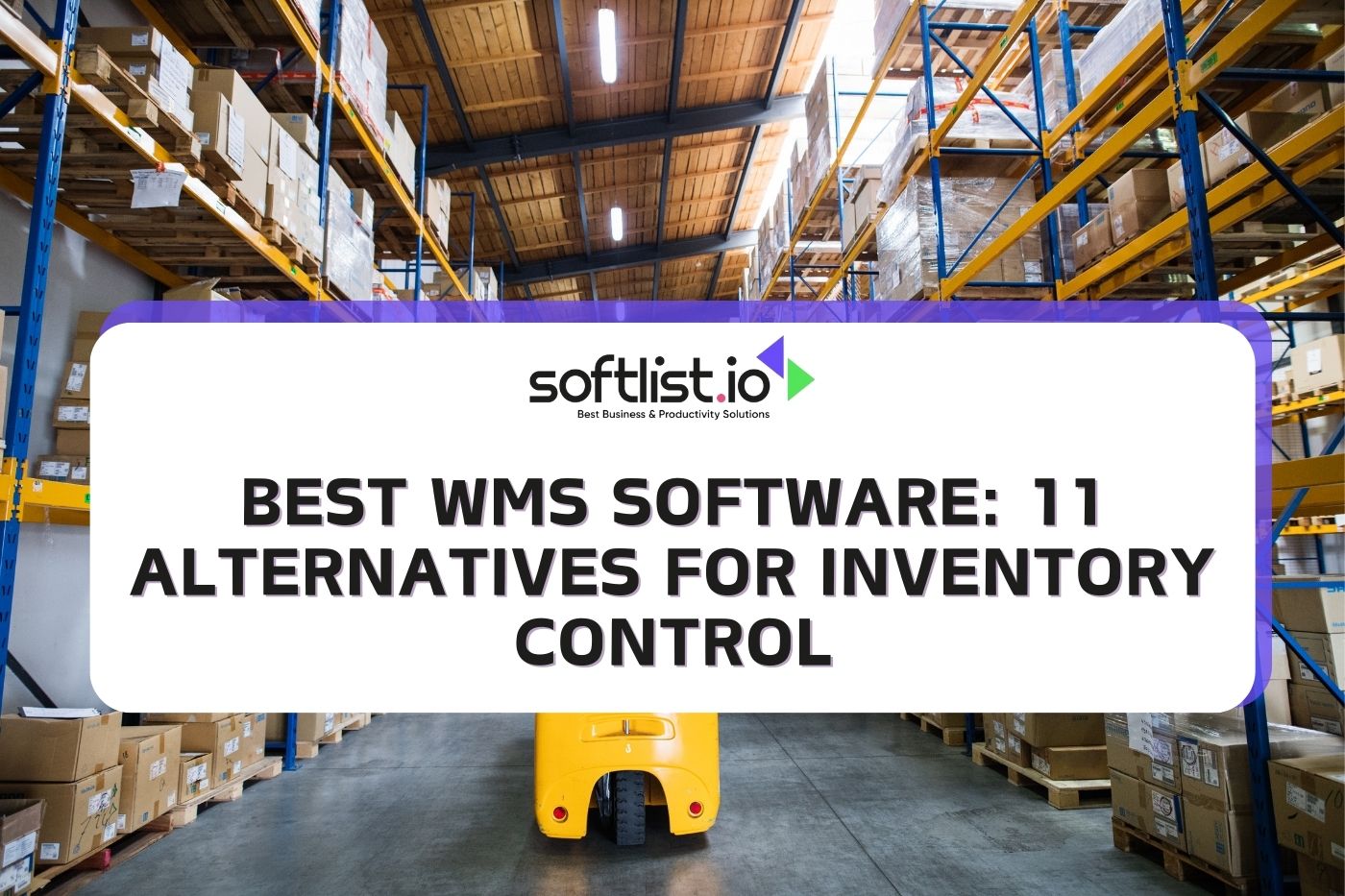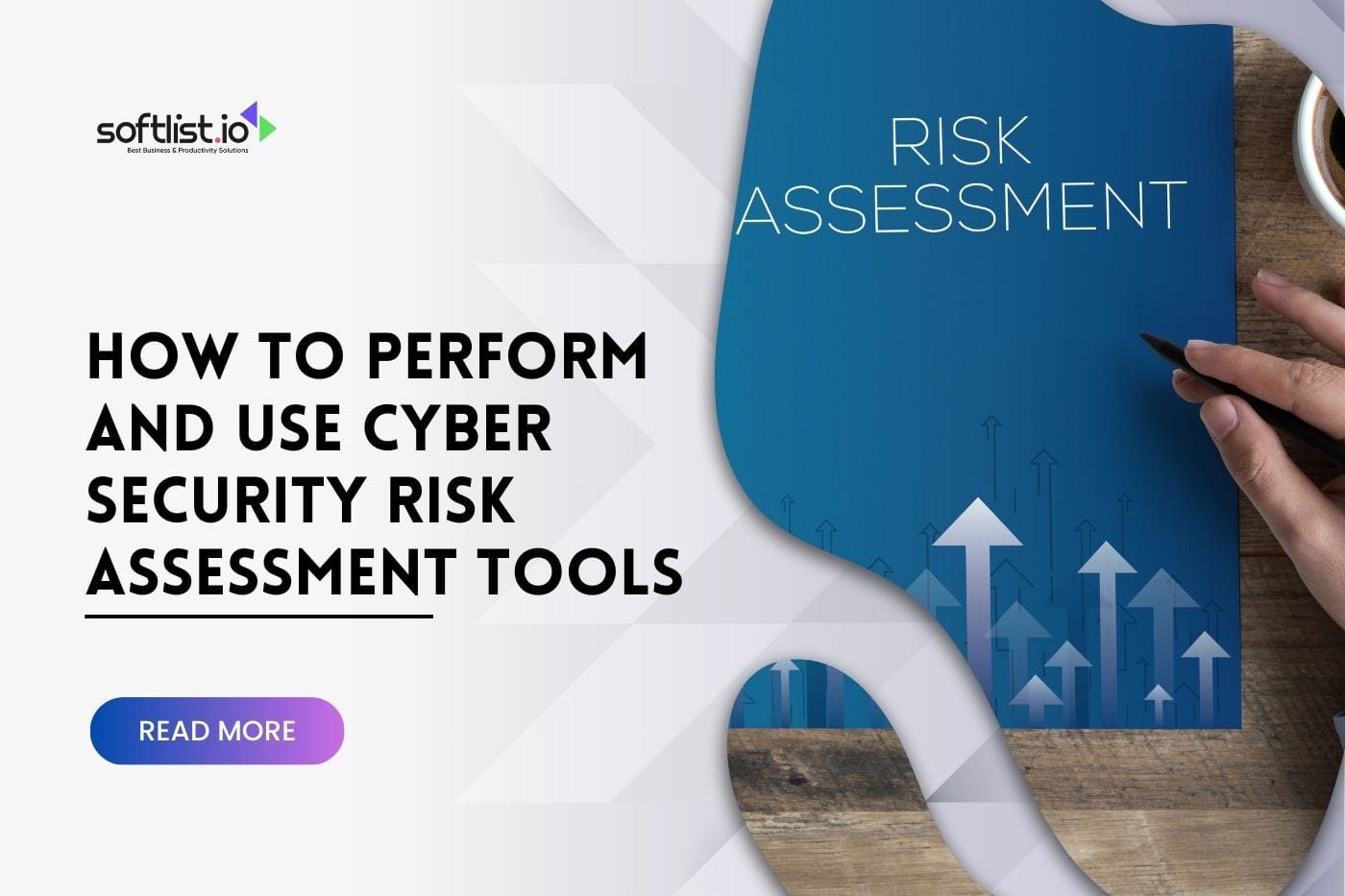Choosing the right WMS software is essential for improving inventory management in the logistics and supply chain industries, which are constantly changing. Improving inventory control in a way that saves time and money is very important for warehouse managers and business owners.
Looking into the different kinds of WMS software gives you a unique chance to improve your operations. Imagine adopting a solution that fits the needs of your business, making your team more productive and cutting down on mistakes. This new article details the best choices that will change how you manage your stock.
Find out how these alternatives can help your business reach its goals with customizable features and easy-to-use layouts. Explore with us as we examine the benefits of picking the right software!
Why Inventory Management Efficiency Matters
Source: Canva Pro
Improving inventory management is very important in the fast-paced world of logistics and supply chain management. As the year 2024 goes on, more and more businesses are realizing that streamlining their inventory processes can significantly affect their bottom line and improve customer satisfaction.
Here’s why mastering inventory management with the right management software is critical for your business’s success:
Central to Customer Satisfaction
- Immediate Availability: Customers expect rapid service and product availability. Efficient inventory management ensures that products are in stock and can be delivered promptly.
- Accuracy in Orders: With the right warehouse management software, businesses minimize errors in order fulfillment, leading to higher customer satisfaction.
Reduces Operational Costs
- Minimized Holding Costs: By accurately forecasting demand, businesses can optimize their inventory levels, reducing the costs of holding excess stock.
- Increased Warehouse Efficiency: A sophisticated warehouse management system (WMS) streamlines operations, from receiving to shipping, reducing waste of time and resources.
Drives Business Growth
- Scalability: Effective inventory management allows businesses to scale operations smoothly without the growing pains of overstocking or stockouts.
- Data-Driven Insights: Modern management software provides analytics and reporting tools that offer insights into inventory trends, helping businesses make informed decisions.
Evaluating Your Warehouse Management Software Needs
Source: Canva Pro
In the fast-paced world of warehouse operations, selecting the best warehouse management (WMS) software isn’t just about keeping up with technology—it’s about staying ahead of the curve. Whether you’re running a small local warehouse or managing a complex, multi-location distribution center, understanding your specific needs is crucial.
Here, we delve into how to assess your business requirements for a WMS solution, highlighting the importance of business size, inventory complexity, and specific industry needs. It is to ensure you not only choose the right management solution but one that optimizes every aspect of your operation.
1. Understanding Business Size and Scope
Your business size directly influences the type of WMS solution you need:
- Small to Medium Enterprises (SMEs): Look for simple and scalable solutions. You’ll want a system to automate basic processes and grow your business.
- Large Enterprises: Larger operations should prioritize comprehensive features that handle complex workflows, extensive inventory types, and integration with existing ERP systems.
2. Navigating Inventory Complexity
Inventory type and complexity are pivotal in selecting a WMS software. Consider the following:
- Variety and Volume: How varied is your inventory? The more diverse, the more you’ll need a WMS that offers detailed tracking and management features.
- Perishables and Hazardous Materials: Specialized inventory requires strict compliance and handling features to ensure safety and regulatory adherence.
3. Catering to Specific Industry Needs
Each industry has unique challenges and requirements. For example, WMS software for a retail operation needs powerful order fulfillment capabilities, while a manufacturing warehouse might prioritize materials requirement planning (MRP) integration. Recognizing your industry’s specific needs is essential for optimizing warehouse efficiency.
4. Leveraging Technology to Optimize Operations
Today’s WMS solutions offer incredible opportunities to optimize your warehouse operation through automation and advanced data analytics. Key features to look for include:
- Automation: Automate repetitive tasks (e.g., picking, packing, and shipping) to reduce errors and increase efficiency.
- Real-Time Data: Access to real-time inventory and order data can dramatically improve decision-making and customer satisfaction.
5. Making the Right Choice
Choosing the right WMS is a strategic decision that affects every aspect of your warehouse operation. Here are a few final tips:
- Take Your Time: Rushing into a decision can lead to choosing a system that doesn’t fully meet your needs.
- Consider the Future: Opt for a scalable solution that can adapt to future technological advancements and business growth.
- Seek Expert Advice: Don’t hesitate to consult with WMS providers or industry experts who can offer insights tailored to your specific challenges.
Comprehensive Review of Top 11 WMS Alternatives 2024
Choosing the right Warehouse Management System (WMS) is a key part of making your warehouse run more smoothly. It can be hard to find one that fits your business’s size, industry, and specific needs because there are so many to choose from.
The hard work has been done for you; we’ve looked into the top 11 WMS software alternatives in depth to help you choose. The information we’ve included is specific to each piece of software, so you can learn about its features, benefits, target business sizes, and industries where it can be used.
Best for Small to Medium Enterprises
1. Cin7 Core
Source: Cin7
Cin7 Core is a dynamic cloud-based inventory management software designed to streamline operations for small to medium-sized businesses. It effortlessly integrates sales channels, stock locations, and order processes, making inventory management a breeze. This solution boosts efficiency, reduces waste, and helps businesses stay ahead in a competitive market.
Key Features:
- Real-Time Inventory Management
- Multi-Channel Integration
- Order and Fulfillment Optimization
2. ShipHero
Source: ShipHero
ShipHero is an all-in-one warehouse management system (WMS) for all e-commerce companies running in the cloud. Its specialty is making the fulfillment process more accessible and more automated, ensuring that storage needs are met quickly. ShipHero’s advanced features help businesses grow by making inventory more accurate, sending faster, and managing workers more efficiently.
Key Features:
- Efficient Order Management
- Advanced Reporting
- Labor Management Tools
3. Odoo Inventory
Source: Odoo Inventory
Odoo Inventory is a flexible inventory and stock management tool that comes with the Odoo package and can be used by many businesses. Its simple design makes optimizing the inventory process easier. Odoo Inventory brings together sales and inventory, which makes operations more efficient and makes customers happier.
Key Features:
- Automated Stock Replenishment
- Multi-Warehouse Management
- Customizable Workflows
View Odoo Inventory’s price plans
4. Infoplus WMS
Source: Infoplus WMS
InfoPlus WMS is a substantial warehouse management system for medium-sized to large businesses with many different needs. By giving detailed information about inventory, orders, and warehouse operations, Infoplus WMS improves workflows, labor management, and running costs. Software advice platforms that have good reviews and ratings suggest it for improving warehouse operations.
Key Features:
- Smart Warehouse Layout
- Batch Shipping
- Integration Capabilities
View InfoPlus WMS’s price plans
Top Picks for Scalability and Growth
5. Desmart
Source: Desmart
These days, businesses need software that is both flexible and complete, like Desmart. Using easy-to-use WMS software for warehouse or distribution center activities makes managing inventory easier. Desmart works well with processes, which makes it simple and useful for businesses of all sizes.
Key Features:
- Warehouse Management
- Easy Integration
- User-Friendly Interface
6. Microsoft Dynamics 365 Business Central
Microsoft Dynamics 365 Business Central is a comprehensive ERP solution that offers robust accounting software capabilities. It’s designed for small to medium-sized businesses looking to optimize their operations. Integrated WMS applications, simplify complex warehouse needs, providing real-time data for better decision-making.
Key Features:
- Integrated Accounting
- Warehouse Optimization
- Scalable Solution
View Microsoft Dynamics’ price plans
7. Acumatica
Acumatica delivers a full-suite cloud ERP solution, focusing on meeting the diverse needs of businesses of all sizes. It’s a software advice favorite for its comprehensive software approach to managing warehouse needs, offering a blend of WMS applications and strong accounting capabilities within a single platform.
Key Features:
- Cloud-Based Flexibility
- Integrated Business Management
- Customizable Modules
8. Epicor ERP
Epicor ERP is a comprehensive software solution for manufacturing and distribution businesses. It is designed to enhance productivity and efficiency across all facets of a company, including the warehouse. Experts of Software advice often note its robust WMS applications and strong accounting software features that substantially support warehouse operations.
Key Features:
- Industry-Specific Solutions
- Advanced Analytics
- Scalability
Leading Cloud-Based Solutions
9. Linnworks
Linnworks is heralded as one of the best warehouse management software for retailers looking to automate their online sales and delivery process. This management solution is designed to centralize control over multi-channel selling. With Linnworks, using the software is straightforward, providing a cloud-based hub that synchronizes inventory and orders across all platforms.
Key Features:
- Multi-Channel Efficiency
- Automated Reordering
- Reporting and Analytics
10. SkuVault
SkuVault is an innovative WMS cloud-based warehouse solution for e-commerce businesses. Recognized in 2024 for its efficient and user-friendly platform, SkuVault makes it easy to find the top features necessary for inventory accuracy and order fulfillment. It stands out among WMS software alternatives in 2024, focusing on reducing errors and improving workflow.
Key Features:
- Real-Time Syncing
- Quality Control
- User Accessibility
11. inFlow Inventory
inFlow Inventory is a comprehensive WMS that offers a robust alternative to traditional systems like SAP Extended Warehouse Management. It’s a management solution for small to mid-sized businesses seeking to optimize their warehouse operations. The software is designed to offer a complete suite of tools for inventory tracking, order management, and reporting.
Key Features:
- Barcoding and Scanning
- Custom Reporting
- Ease of Use
View inFlow Inventory’s price plans
Key Features to Consider in a WMS
When it comes to streamlining warehouse operations and boosting efficiency, choosing the right warehouse management solution (WMS) is crucial. But with so many options on the market, how do you decide which features are non-negotiable?
Here’s your guide to the must-have functionalities a top-notch WMS should offer. These features ensure smooth day-to-day operations and position your warehouse for scalable growth and success.
1. Real-Time Tracking
Real-time tracking is the backbone of any effective warehouse management solution. It allows for immediate visibility into inventory levels, order status, and shipment tracking, ensuring that your warehouse operation is both responsive and efficient.
2. Analytics and Reporting
Data-driven decision-making is key in today’s fast-paced market. A WMS that offers comprehensive analytics and reporting features can provide insights into performance metrics, helping you identify areas for improvement and optimize operations.
3. Integration Capabilities
Your WMS should not be an island. Integration capabilities with other systems (such as ERP, CRM, and e-commerce platforms) are crucial for streamlining processes and ensuring seamless information flow across your business.
4. Customization Options
Every warehouse has its unique challenges and requirements. A WMS that offers customization options can adapt to your specific operational needs, whether it’s for handling special inventory types, adjusting to workflow variations, or accommodating future growth.
5. Order Management
Efficient order management is at the heart of customer satisfaction. A WMS with robust order management capabilities ensures accurate order fulfillment, minimizes errors, and accelerates delivery times, enhancing the overall customer experience.
6. Support for 3PL Logistics
For businesses that rely on third-party logistics (3PL) providers, having a WMS that supports 3PL functionalities is a game-changer. This feature enables seamless collaboration with logistics partners, ensuring flexible and efficient supply chain operations.
7. Scalability
As your business grows, your WMS should grow with you. Scalability ensures that the system can handle increased volume and complexity without compromising performance.
Maximizing ROI with the Right WMS Choice
In today’s fast-paced business environment, the backbone of a successful supply chain lies in its efficiency and agility. Implementing the right Warehouse Management System (WMS) can significantly enhance your operations, offering a substantial return on investment (ROI) by saving time, resources, and financial outlay.
However, the path to choosing the right software is paved with numerous considerations, from integration with enterprise resource planning (ERP) systems to optimizing pick and pack operations. Here’s how to ensure you’re making an informed decision that will pay dividends in the long run.
Understand Your Needs
Before diving into the sea of available WMS solutions, take a step back and assess your needs. Consider the size of your operation, the complexity of your inventory, and the capabilities of your warehouse staff. A solution that integrates seamlessly with your existing enterprise resource planning systems can streamline processes, reduce errors, and improve efficiency.
Calculate Potential Savings
To gauge the potential ROI of a WMS, consider these key areas where savings can be realized:
- Time Savings: Automating routine tasks can free up your staff for more strategic activities. Evaluate how much time could be saved on pick and pack operations, inventory management, and reporting.
- Resource Optimization: A WMS can optimize the use of warehouse space and reduce the need for excess inventory, leading to savings in storage and capital costs.
- Financial Outlay: Consider the upfront costs of the software against the long-term savings. A WMS can reduce the need for additional staff during peak times and decrease the risk of costly errors.
Implementation Tips for a Smooth Transition on Warehouse Operation
Implementing a new Warehouse Management System (WMS) can seem daunting, but the right approach can significantly improve operational efficiency and productivity. Whether you’re upgrading to a more sophisticated inventory management software or choosing a warehouse management system for the first time, the transition process is critical.
Here are actionable tips to ensure a smooth switch, emphasizing preparation, data migration, staff training, and realistic timelines.
1. Preparation is Key
- Assess Your Needs: Before implementing new software, clearly understand the features included that will benefit your operation the most. This might range from inventory management capabilities to reporting and analytics functionalities.
- Choose the Right System: Spend ample time choosing a warehouse management system that aligns with your business goals. Consider a management tool that offers scalability, user-friendly interfaces, and integrates with your existing systems.
- Involve Your Team: Engage with staff who will be using the system daily. Their insights can highlight essential features and potential challenges you might not have considered.
2. Master Data Migration
- Cleanse Data: Before migrating data, cleanse it for accuracy. Remove outdated or duplicate inventory records to ensure your new system starts clean.
- Test the Migration Process: Conduct a trial run of the data migration to identify and address any issues before the full migration occurs.
- Secure Your Data: Ensure your data migration plan includes robust security measures to protect sensitive information during the transfer.
3. Comprehensive Staff Training
- Customize Training Programs: Different roles may require different levels of training. Customize your training programs to meet the specific needs of your staff.
- Utilize Vendor Resources: Many WMS vendors offer comprehensive training resources. Take advantage of these to enhance your team’s understanding of the new system.
- Schedule Ongoing Training: Post-implementation training helps staff stay updated on new features and best practices, ensuring the long-term success of your WMS deployment.
4. Setting Realistic Timelines
- Develop a Phased Approach: Implementing your WMS in phases allows for smoother transitions and easier management of potential issues.
- Allocate Time for Testing: Include ample time in your timeline for testing the new system in a controlled environment before going live.
- Expect the Unexpected: Allocate buffer time for unforeseen challenges. Flexibility in your timeline can significantly reduce stress and improve the quality of the implementation.
Key Takeaways
Choosing the right Warehouse Management System (WMS) is more than just picking software; it is about finding a management platform that transforms how you handle inventory, serve customers, and grow your business.
The perfect WMS packs advanced features that make managing multiple warehouses a breeze, integrates smoothly with transport management systems, and brings all your operations under one roof.
Here’s the scoop: Opt for a WMS made just for you. Look for key features, including real-time tracking, intuitive analytics, and the flexibility to customize to your heart’s content.
Whether you’re a small business or a sprawling enterprise, the goal is to find a platform that scales with you, simplifies complex processes, and makes managing those multiple warehouses feel like a walk in the park.
Remember, it’s not just about the bells and whistles. A great WMS should make your life easier, your customers happier, and your business more efficient. So, take your time, dig into those advanced features, and choose a management platform as ambitious as yours.
FAQs
1. How do I determine the best WMS for my business size?
To determine the best WMS for your business size, assess your warehouse or distribution center’s specific needs and consult user reviews to find a system that’s the best fit.
2. What is the average implementation time for a new WMS?
The average implementation time for a new WMS varies, but implementing warehouse management software typically takes 3 to 6 months, depending on the complexity.
3. How can I secure my data in a cloud-based WMS?
To ensure your data is secure in a cloud-based WMS, choose a software application with robust security measures and ask the provider about their data protection practices.
4. Are there customizable WMS solutions for niche industries?
Yes, there are customizable WMS solutions for niche industries; ensure the software can be tailored to meet the unique requirements of your specific type of warehouse.
5. What are the signs it’s time to upgrade to a new WMS software?
Signs it’s time to upgrade to a new WMS software include struggling to meet demand, frequent errors, and the system’s inability to integrate with other technologies or manage multiple warehouses efficiently.
Explore Your WMS Options with Softlist.io
Choosing the right WMS is made easy with Softlist.io’s expert insights. Whether you’re after a cloud-based system or something more specialized, we guide you to the best fit for your operations. Start streamlining your processes today with Softlist.io’s help, where the ideal software solution is just a click away.
Visit Softlist.io and take the first step towards optimizing your warehouse operations. With our support, selecting and implementing a WMS that meets your needs and drives business growth is simpler than ever.
Learn more about project management software in our other posts. They might help you automate the WMS your business uses.






